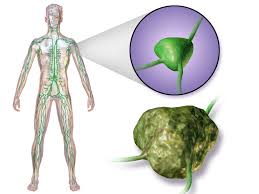


Learn what lymphoma is, its main types, early symptoms, risk factors, and how it’s diagnosed and treated. Stay informed to take charge of your health.
You may have heard the term “lymphoma” and wondered what it really means. It’s a condition that affects many people each year. So, what is lymphoma? It’s a type of cancer that starts in the lymphatic system, a part of your immune system that helps fight infections.
In this blog, we’ll explain the main types of lymphoma, symptoms to watch for, risk factors, how doctors diagnose it, and the treatment options available today.
Lymphoma is a form of blood cancer. It starts in the lymphatic system, which includes lymph nodes, the spleen, bone marrow, and lymph vessels. This system helps your body fight illness and filter waste. When lymphoma develops, it means that white blood cells (called lymphocytes) grow abnormally and may build up in lymph nodes or other parts of the body.
Unlike other blood cancers like leukemia, lymphoma usually shows up as a solid tumor in the lymph nodes. It can start almost anywhere, including your neck, chest, armpits, or groin. Some forms grow quickly and need immediate care, while others are slow and may not require treatment right away.
Lymphoma isn’t just one disease. It includes different types, but most fall into two major groups: Hodgkin lymphoma (HL) and Non-Hodgkin lymphoma (NHL).
Hodgkin lymphoma is less common but easier to identify under a microscope. It features a specific kind of cell called the Reed-Sternberg cell. NHL, on the other hand, includes more than 60 types of lymphomas, each with its own traits and behaviors.
Some well-known subtypes of NHL include:
Symptoms of lymphoma can be subtle at first. That’s why many people don’t realize they have it until a check-up or blood test shows something unusual.
Common symptoms include:
You might be wondering if lymphoma is curable. The answer depends on many things—such as the type, how far it has spread, and how well the person responds to treatment. Many people with Hodgkin lymphoma are cured, especially if it’s caught early. Some types of non-Hodgkin lymphoma can also be cured or kept under control for many years.
Common risk factors include:
Doctors use a few steps to figure out if someone has lymphoma. It usually starts with a physical exam and blood tests. If they find signs that raise concerns, the next step might be imaging tests like CT scans or PET scans.
Once the diagnosis is confirmed, doctors use staging to see how far the disease has spread. This helps decide which treatment will work best.
Common treatment options include:
Lymphoma can feel like a confusing and scary word, especially if it’s something you or someone close to you is facing. But knowing the facts makes a big difference. We’ve looked at what lymphoma is, the key types like Hodgkin and Non-Hodgkin, and the signs that something might be wrong.
If you or a loved one has been diagnosed, it’s important to know that treatment is constantly improving. In fact, clinical trials for Diffuse Large B Cell Lymphoma are opening new doors for patients every year. These trials aim to bring better, more targeted care to those who need it most.
